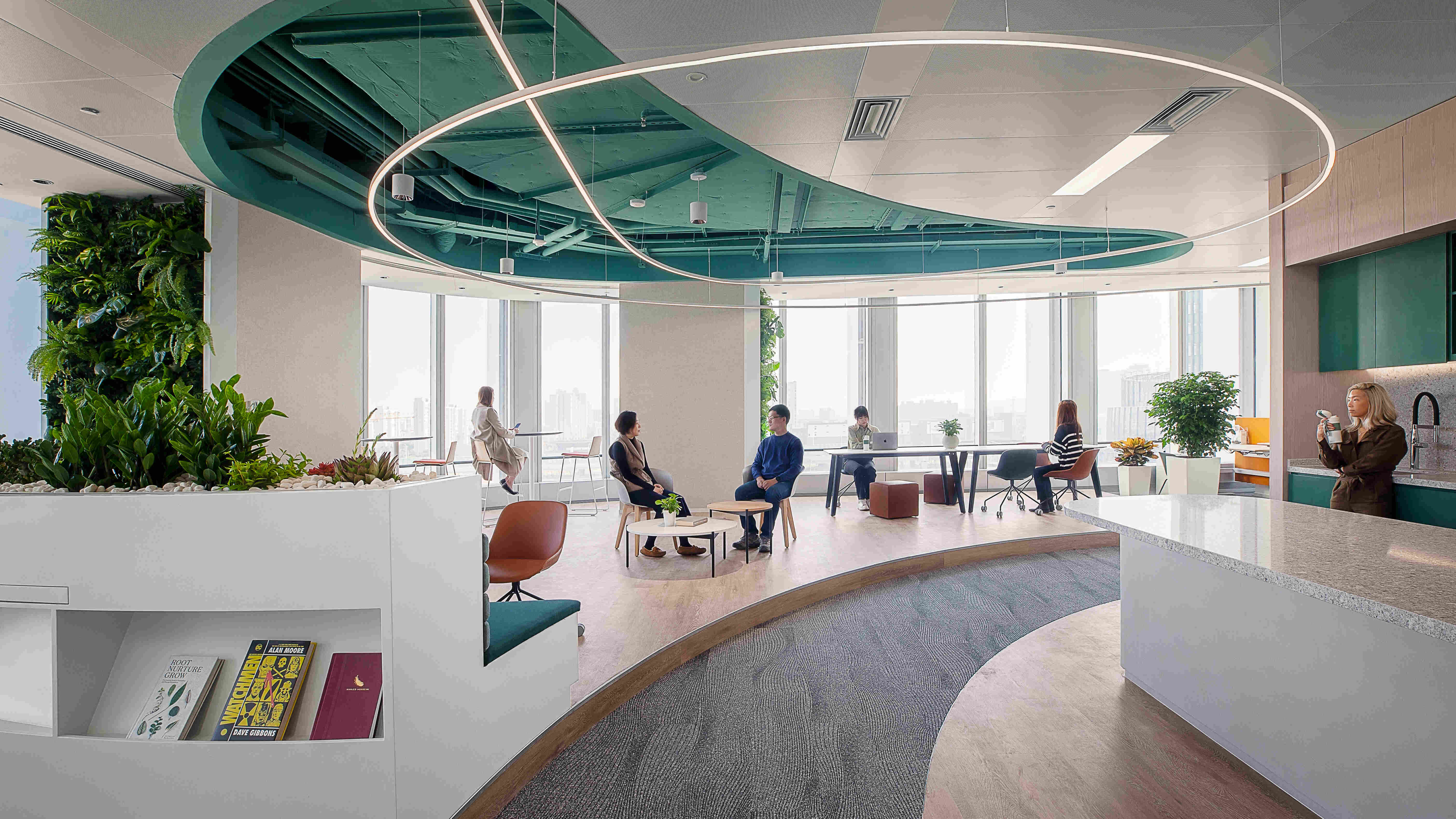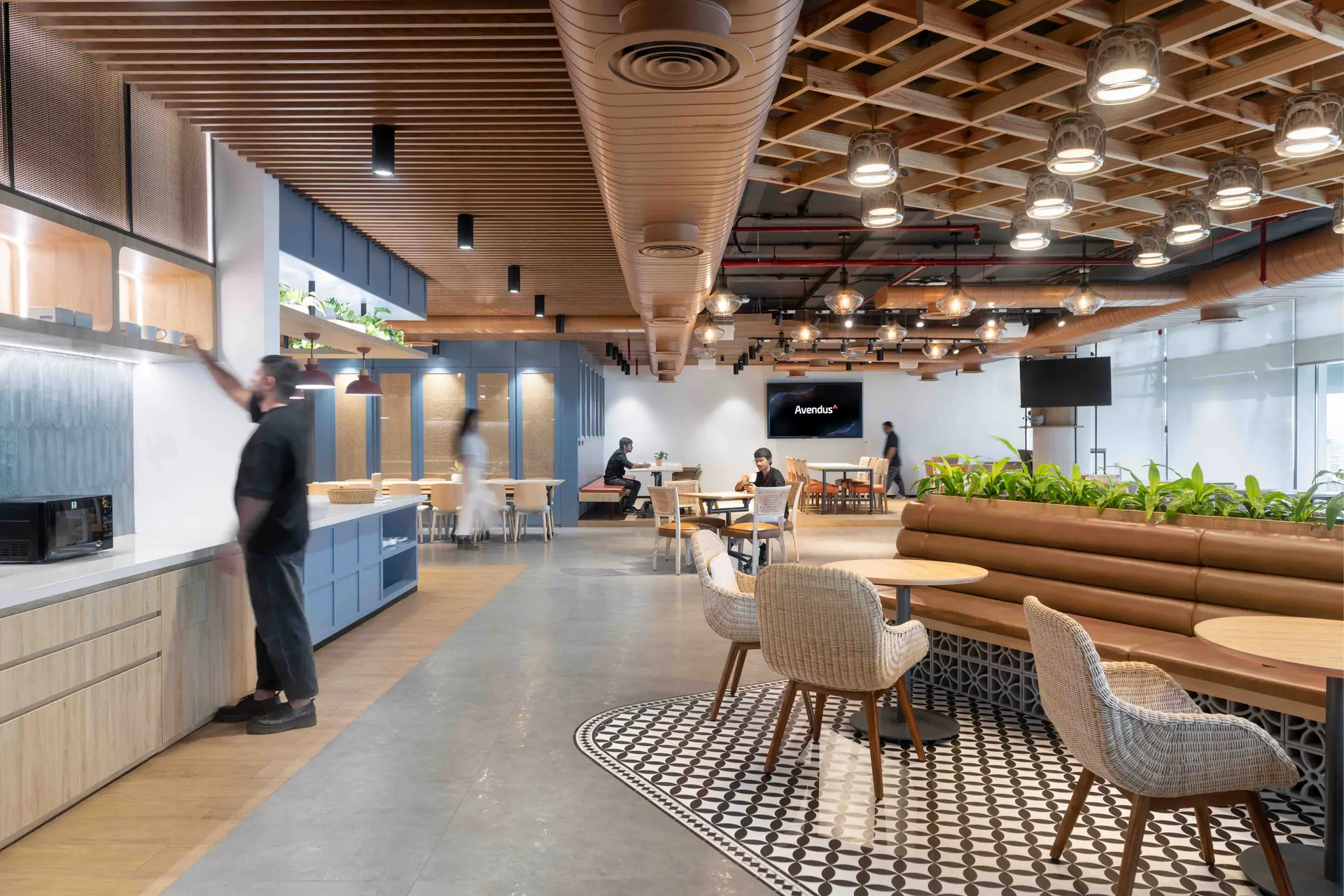
Workplace Technology: The Key to Bridging the Generational Gap
Nearly every industry in existence today is reliant on some form of technology for its day-to-day functioning. Software platforms, AI, tools and the IoT have become indispensable elements of every business. With the advent of the Digital age and the next generation of talent joining the workforce, technology is now more than just a medium to facilitate business and keep the show running; it is also a resource that can significantly improve the work environment.
Technology can also serve as a powerful equaliser in a multi-generational workforce, where individuals from different age groups work together. By incorporating technology into workplace designs, organisations can create an inclusive and empowering work environment that caters to the needs and preferences of employees from different generations.
Let’s take a look at how technology integration helps in bridging the generational gap.
Engagement: Enhancing Communication Across Generations
Effective communication is vital for the success of any organisation, regardless of the generational diversity of its workforce. Technology offers numerous tools and platforms that facilitate communication and bridge the gap between different age groups. To accommodate the diverse communication preferences of employees, organisations need to provide a range of communication tools. Some employees may prefer real-time collaboration for deeper interactions, while others may benefit from a more flexible mode of communication that doesn't disrupt their focus.
Asynchronous tools such as email, instant messaging, and project management software allow employees to communicate and collaborate at their own pace. On the other hand, synchronous tools like video conferencing and team messaging platforms enable real-time communication, fostering deeper connections and more immediate problem-solving. Technology Integration in workplace designs seeks to balance asynchronous and synchronous work tools to draw out the true power of Technology in the Workplace.
In a globalised workforce, employees often work in different time zones or remote locations. These tools enable teams to collaborate regardless of different work timings, ensuring effective communication and efficient project completion. Technology offers several benefits for effective communication across generations. It facilitates quick and easy information sharing, reduces miscommunication, and provides a centralized platform for storing and accessing important documents. Additionally, it allows for more inclusive participation, giving all employees an equal opportunity to voice their opinions and ideas.
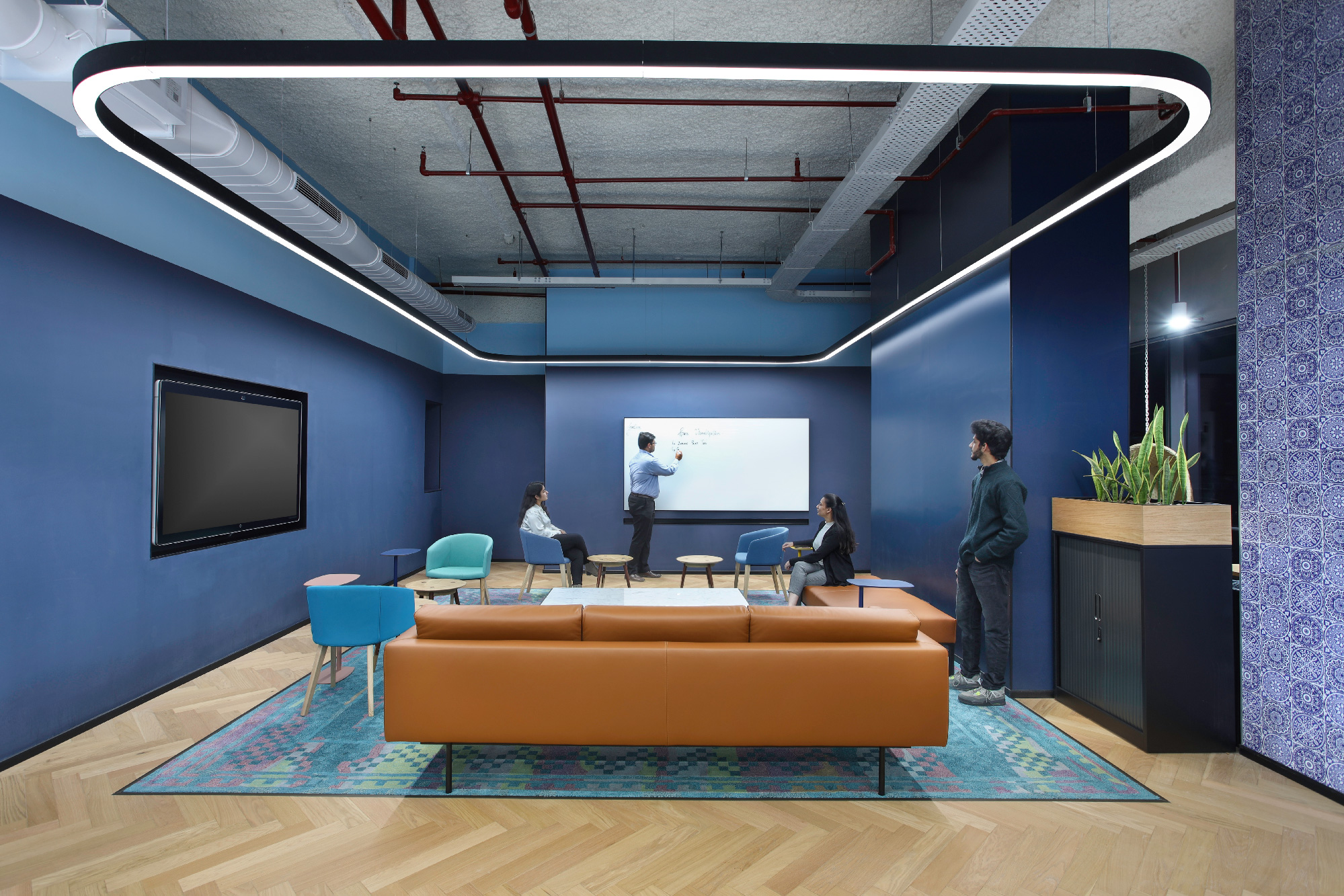
Technology plays a crucial role in the new workplace design at Gartner's office in Gurgaon. It is seen as a fundamental aspect that enhances efficiency and keeps the organisation updated in today's ever-changing world. The office design concept of the workspace prioritizes the integration of cutting-edge technology to meet the organisation's requirements.
Gartner's meeting rooms are equipped with state-of-the-art video conferencing systems, enabling seamless virtual meetings - equipped with the latest technologies to facilitate clear audio and high-quality video, ensuring effective communication regardless of geographical distances. The integration of such advanced video conferencing capabilities enables teams to collaborate seamlessly and conduct virtual meetings with ease.
Collaboration: Bridging the Generational Divide
Collaboration lies at the heart of productive teamwork. With a multi-generational workforce, leveraging technology-based collaboration platforms becomes crucial to bridge the generational divide and promote effective collaboration. Design thinking emphasises the importance of understanding the unique needs and preferences of various generations. By incorporating technology into the design of office interiors, workplaces can be created to accommodate ergonomic furniture, flexible layouts, and collaborative spaces. This approach ensures that employees of all age groups can work comfortably and seamlessly engage in collaborative activities, supported by technology that enhances communication and connectivity.
By integrating technology into business processes, organisations can eliminate the need for lengthy email chains or physical meetings, saving time and streamlining work processes. Collaboration platforms, such as project management software, enable teams to work together on projects in real time, regardless of their physical location. This level of seamless collaboration enhances productivity and efficiency across all generations. Such platforms provide a centralised space for sharing ideas, documents, and feedback, enabling seamless collaboration and knowledge sharing. Designing spaces for collaboration which integrate these platforms empower employees to contribute their unique perspectives, tapping into the collective intelligence of the team.
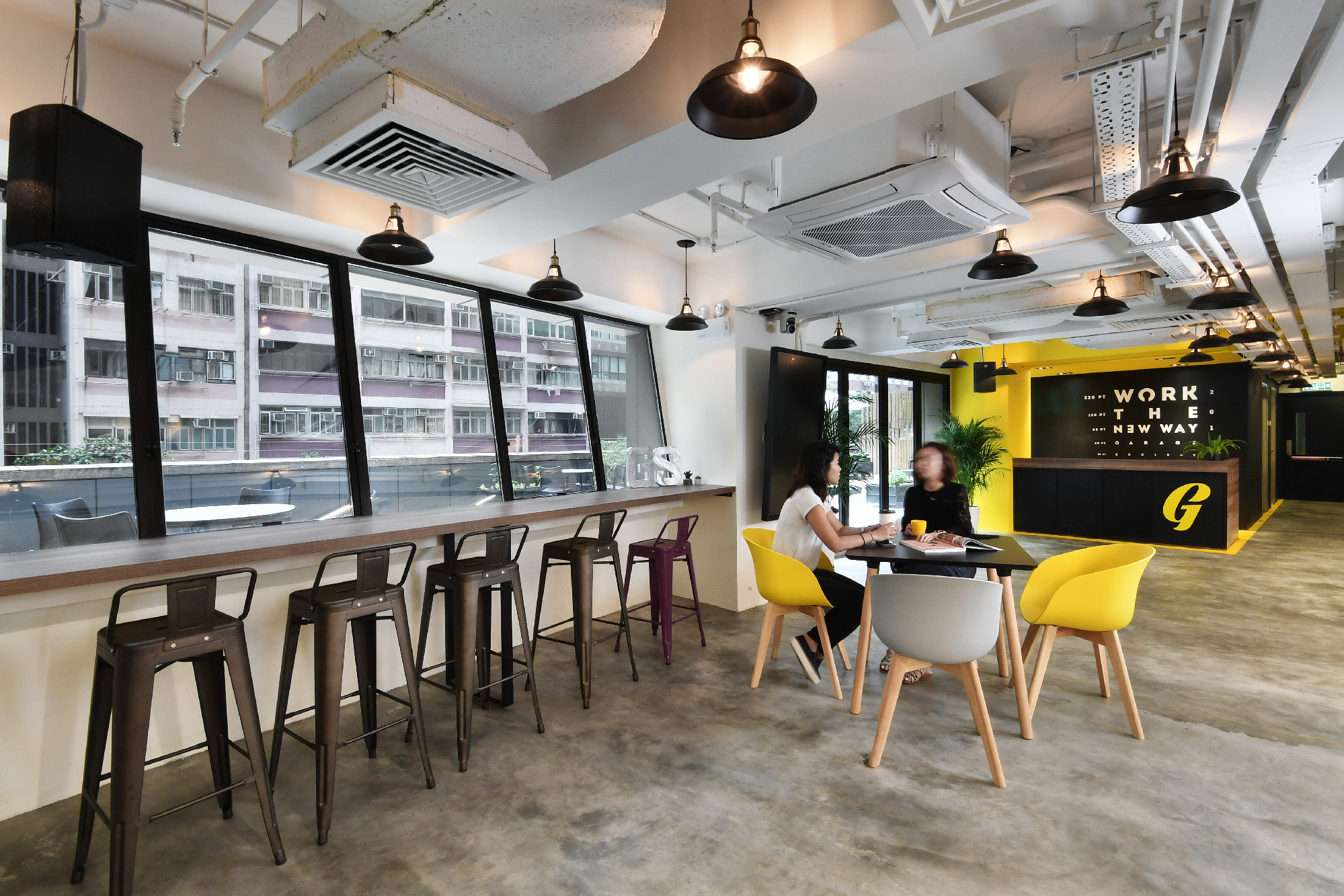
To ensure smooth operations and convenience, room booking systems have been implemented by Space Matrix for the meeting rooms in Gartner’s office interior. This allows employees to easily schedule and reserve meeting spaces, optimizing the utilization of resources. Additionally, smart boards have been strategically placed in the work neighbourhoods, providing employees with interactive tools for collaboration and information sharing. By incorporating these technological advancements into the workspace design, Gartner's office in Gurgaon is equipped with the latest and best technology available. This not only enhances operational efficiency but also ensures that the organisation remains at the forefront of technological advancements in the business world.
Flexibility: Adapting to Individual Needs
Flexibility in the workplace is essential to accommodate the diverse needs of employees across different generations. Workplace designs that incorporate technology solutions play a crucial role in facilitating this flexibility and ensuring a conducive work environment for all. Technology enables different work preferences and settings to suit individual needs. Employees can personalise their digital workspaces, choosing layouts, colours, and features that enhance their productivity. Customisable settings also include font sizes, language preferences, and accessibility features, ensuring inclusivity for employees with diverse needs.
Digital workspaces can be customised to accommodate individual preferences and work styles to enable all generations to find work configurations that suit them best. Employees can personalize their interfaces, arrange tools and resources according to their workflow, and set up notifications to stay updated on relevant information. Personalization enhances user experience and empowers employees to create a workspace that aligns with their preferences, ultimately boosting productivity and satisfaction.
Technology also offers accessibility features that cater to the diverse needs of employees, including those with disabilities or specific requirements. Screen readers, colour contrast settings, voice recognition software, and ergonomic equipment are examples of technology-driven accessibility solutions. By implementing these features, organisations ensure that all employees have equal access to resources and opportunities without age being a barrier thus fostering inclusivity and diversity in the workplace.
Fostering a Culture of Innovation: Empowering Ideas Across Generations
Technology serves as a catalyst for innovation and creativity within an organisation. By embracing workplace technology, organisations can empower employees from different generations to contribute their ideas and foster a culture of innovation. Technology-based collaboration platforms provide a virtual space for employees to generate ideas, brainstorm solutions, and engage in problem-solving collectively. These platforms enable employees from different generations to share their perspectives, expertise, and insights, fostering a more comprehensive and diverse approach to innovation. By encouraging cross-generational collaboration, organisations can tap into the wealth of knowledge and experience present within their workforce.
Innovation is not limited to idea generation; it also involves implementing and executing those ideas effectively. Technology provides tools and resources to streamline processes, automate tasks, and track progress, ensuring efficient implementation of innovative solutions. By leveraging technology throughout the innovation lifecycle, organisations can bridge the generational gap and empower employees to transform ideas into tangible outcomes.
BCG's office design integrates a digital experience layer throughout, creating a seamless digital experience and fostering an iterative and interactive environment for a diverse workforce. Space Matrix identified individual, team, and client-level inhibitors through interviews and visioning sessions. The design solution introduced enablers to address these inhibitors and went beyond by incorporating "stimulants" to tap into unused potential and align with BCG's work style. Technology played a key role in activating spaces, particularly the Digital Immersion Room in the client zone, which allows for touch, view, and interaction with displayed content. Collaborative environments are supported by highly tech-enabled stimulant spaces, such as the multi-purpose room with movable screens and reconfigurable walls. The Garage and Ideation Room are designed for intensive brainstorming sessions, featuring different seating areas, tables, writing surfaces, and strategically placed screens. Informal conversations are encouraged in spaces like the work cafe, which is layered with tech to double up as a cafe cum work area. The resulting BCG ‘UnOffice’ is a unique and distinct space, deviating from a typical office setting.
Providing Choice: Enhancing Employee Satisfaction
Employee satisfaction is a key factor in productivity, engagement, and retention. Technology provides employees with the means to offer choices, convenience and flexibility, enhancing their overall satisfaction with their work experience. The integration of technology into workplace designs can be a seamless process. By incorporating IoT (Internet of Things) devices, the infrastructure can support smart lighting, temperature control, and automated systems that cater to the preferences of employees across different generations. These advanced features enhance overall comfort, productivity, and engagement levels by creating a personalized and efficient work environment.
With the right technology solutions and automation, Employers can open up choices to work in arrangements such as remote work, flexible hours, or compressed workweeks. These options allow employees to adapt their work schedules to accommodate personal commitments, preferences, or individual peak productivity times thus enhancing their sense of belongingness with the organisation. Flexibility in work arrangements promotes a healthy work-life balance and empowers employees to take control of their professional lives. Different generations may have varying preferences when it comes to communication. While some may prefer face-to-face interactions, others may find written communication more effective. Technology provides a range of communication channels, such as email, video conferencing, instant messaging, and collaborative platforms, allowing employees to choose the method that suits them best. Offering multiple communication options allows employees to augment their workflow and be more productive regardless of different work preferences tied to generational differences.
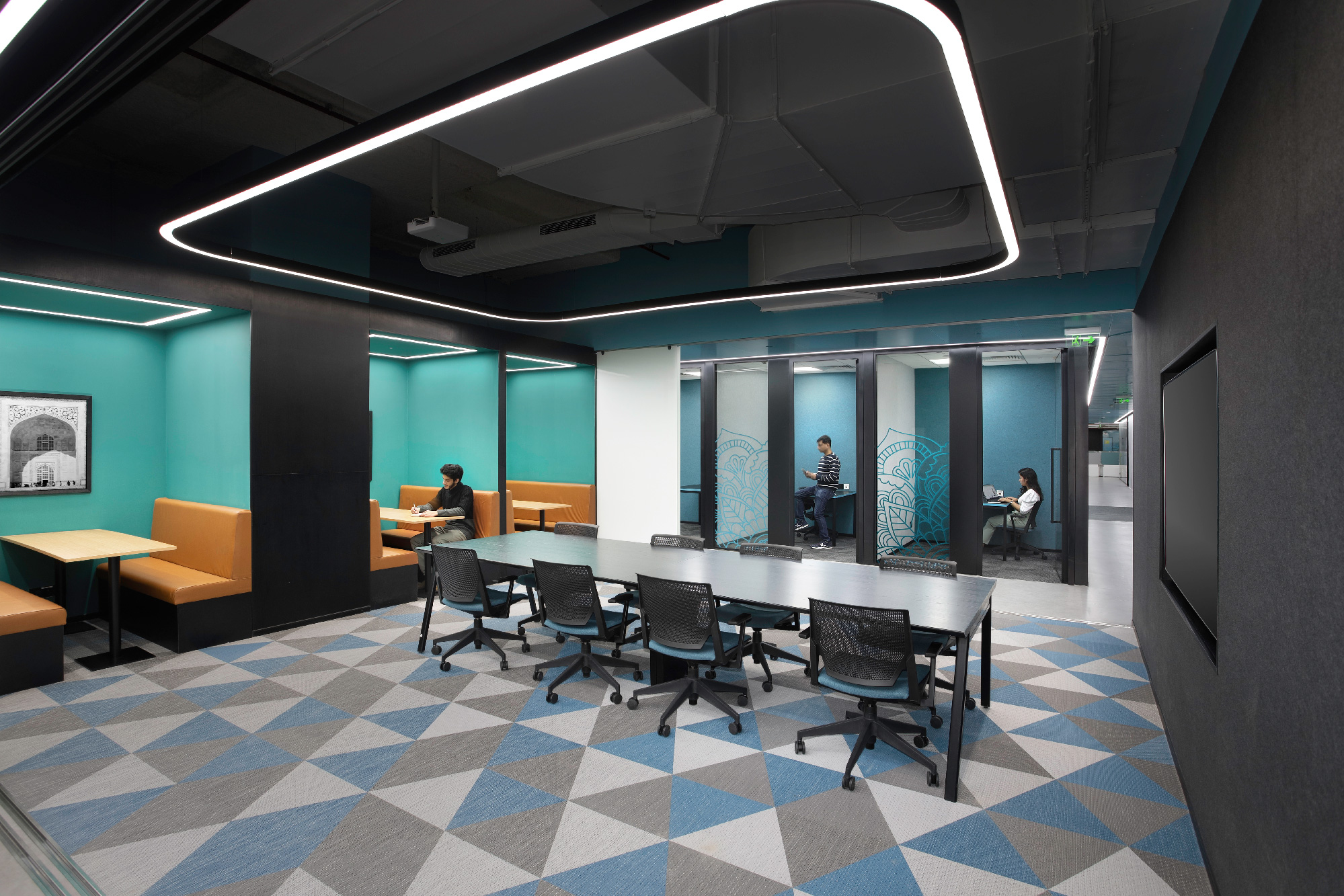
The Gartner office in Gurgaon has been equipped with a fully integrated Building Management System (BMS) that controls various aspects of the facility. This advanced system manages the lighting settings, automatic blinds, and temperature, ensuring optimal comfort and energy efficiency. Additionally, visitor and access management systems have been installed at the reception and all secondary entrances, enhancing security and regulating access to the premises.
To enhance productivity, each workstation is equipped with dual monitors, providing employees with a spacious and efficient workspace. Enclosed rooms are equipped with wireless projection facilities, allowing for seamless presentations and collaborative discussions. These technology integrations in the office interior put choice and control in the hands of the employees and create a sense of belonging by allowing them to manage and configure aspects of their workplace to suit their preferences.
The benefits of embracing workplace technology are numerous, ranging from improved productivity and efficiency to enhanced employee engagement and satisfaction. It enables organisations to tap into the diverse talents, perspectives, and experiences of employees from different generations, fostering collaboration and collective intelligence. By harnessing the power of technology, organisations can build a strong foundation for success in the digital age.
Is your Company ready to embrace technology and improve the quality of life of its employees?
Give our Design experts a chance to help you build an office interior that empowers your workforce put their best foot forward.

